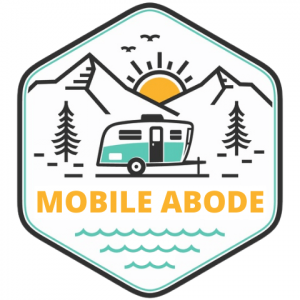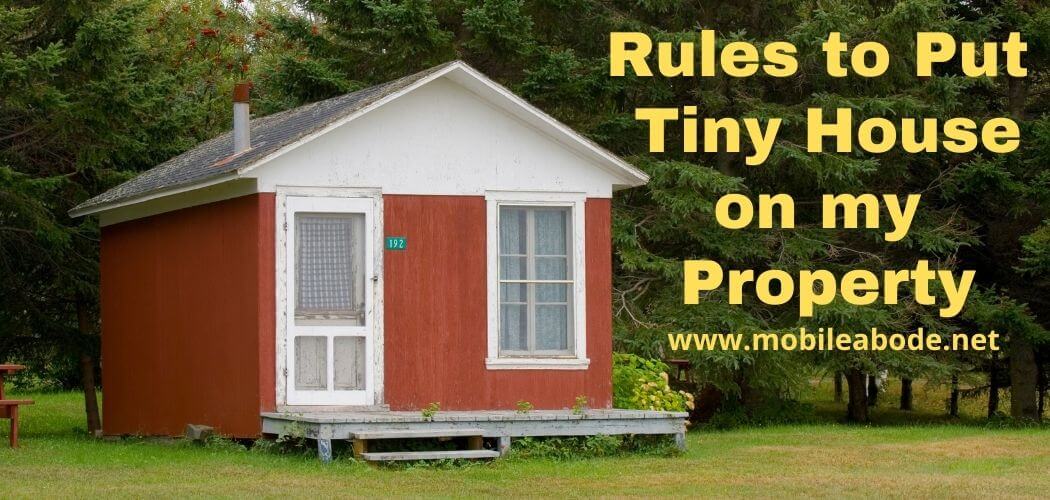A lot of people are interested in putting a tiny houses on their property because they take up less space and can be built or bought for a fraction of the cost.
Tiny homes also make it possible to live without paying high mortgage payments, property taxes, and other costs associated with owning a traditional home.(www.wikipedia.com)
People who want to start living this way should know that putting a tiny house on your property might not be legal depending on where you live. You need to research local zoning laws before buying or building one.
This blog post is about the legality of putting a tiny house on your property.
The first thing to consider before building anything new is whether you need permission from your city or town government and what zoning ordinances apply in your area.
Generally, if the structure will not exceed 200 square feet and it’s not meant as permanent housing (such as a vacation cabin), then local governments may not require approval for construction.
Be sure to check with your municipality before proceeding with any plans!
Can I Put A Tiny House On My Property?
Yes, in most cases. In addition to zoning ordinances, certain restrictions may apply because of your location. For example, many areas have minimum lot size requirements. Some communities also restrict how close a tiny home can be located near a public road or water resource where it could be considered a safety hazard.
If you can’t find specific documentation about “tiny homes” online the local planning and zoning department should have information on all ordinances about residences in your area.
It’s important to know whether the property you’re interested in buying is zoned for dwellings as small as those being built today or if there are special provisions that must be made before putting one on the land.
You’ll need to go over any legal documents involved with the property purchase to check for restrictions against building on the land.
You’ll also want to check your homeowner’s insurance policy to see what kind of coverage you have and how it may be affected by adding a tiny home to your property. These are only some of many things you should consider before putting up a tiny house on your property.
[su_note]Also Read: Can I Put a Mobile Home on my Property?[/su_note]
Some people choose to ignore zoning laws because they believe that the government is infringing upon their liberties.
Others decide that living off-the-grid is more beneficial than following local ordinances simply because doing so frees them from society’s rules.
This leads back to our initial point – do your research before taking action! Your best bet is to go through the proper channels and see what you can and in some cases, can’t, do in your community.
Can I Rent a Tiny House on My Property?
There are some rules and regulations you need to follow if you’re renting a tiny house, but every city has different laws.
In some cities, it’s legal to live in a tiny home on your property as long as you have a permit for a recreational vehicle parking space. If the city allows this kind of use, they’ll issue a special permit so you can park your RV or tiny home at another location besides where you sleep at night.
It’s important to check with local authorities before making any plans so that everything runs smoothly from the beginning.
Can I put multiple tiny homes on one property?
That’s a question you’ll have to ask your local authorities. They vary from one area to another so it’s essential to do some research before moving forward with your plans.
If you’re going through the proper channels and doing what you need to do, they should be able to tell you if putting up multiple tiny homes is possible or not.
In some cases, there may also be certain restrictions in place about how far apart dwellings have to be from each other on your land.
One thing that will change depending on where you live is utilities – namely water and sewer hookups.
Some areas allow more than one dwelling per property but require those who live there to have their septic system.
This is another thing you’ll need to look into as you do your research as it can greatly affect the final price of the tiny homes if multiple hookups are needed for each dwelling.
Many cities and counties have gone from requiring a minimum number of units per property to only allowing one, so it’s best to check local legislation carefully before making any plans.
Now that we’ve covered all the basics, what you’ll want to know about putting a tiny house on your land, we’re going to move on to things like layouts and size guidelines in part 2 of our series!
Legal Requirements for Putting a Tiny House on Your Property
The final thing you’ll need to do is cover legal requirements.
Where you live and where the tiny house is located will affect what rules and regulations apply. The following guidelines are taken from the American Tiny House Association:
1) Most cities require a minimum of two parking spaces per unit.
Some rental communities charge extra for RV’s or mobile homes because they take up more space than traditional housing units due to their wheelbase size and towable dimensions.
This can prove costly in some areas so be sure to find out if this fee will apply before purchasing your mobile home or RV with wheels attached, which eliminates the additional costs seen when buying an off-the-grid tiny house like our Modern Outfitter model above.
2) Check for zoning codes that may require RV’s, mobile homes, and tiny houses to be located at least fifty feet from property lines or fifteen or twenty-five feet away from the side or rear property lines.
3) Get a permit to build your tiny house before collecting any fees. Some cities have no code requirements for tiny houses on wheels but they still require permits for construction of accessory dwelling units sometimes referred to as mother-in-law apartments, backyard cottages, extra rooms, and granny flats.
This is more than just checking local regulations as you’ll need to know what size appliances you can use if they differ from those in your main home.
You’ll also need some additional info such as whether there are height restrictions that will affect how high your roof can be.
4) Check the height limit on structures in your town or city.
Some places allow unrestricted building heights while others set maximum limits at 30 feet above ground level, which could make it impossible for someone to live in a tiny house like the one above if it’s placed on wheels.
Many cities require low-rise housing which is defined as up to 35 feet tall but check with local authorities before you start any construction just in case there are specific requirements that differ from this general rule of thumb.
[su_note]For More Details: What is the Legal Distance Between Mobile Homes?[/su_note]
5) Check local regulations about how close together homes have to be when built side by side.
If you plan on putting multiple dwellings – or even just two tiny homes – onto your property then take into account that they’ll need to be close enough for a shared driveway as well as utilities like electricity and water hookups.
The above map shows the distribution of tiny houses by state and highlights those places where the most homes are built on only one acre:
It’s clear that there are many things you’ll need to take into consideration when trying to determine how to put a tiny house on your property, but if you’re willing to do some research and keep an open mind, you really can find a way to live off-the-grid.
Even if your tiny house is still connected to existing utilities like power and water, you can minimize costs by using renewable energy sources such as solar panels and rainwater collection methods.
By the time we’ve finished our series on putting a tiny house on your land, we hope that even complete beginners will feel confident in putting together their own mobile homes!
[su_note]Topic for You: How Many Mobile Homes per Acre?[/su_note]
Conclusion:
The answer to this question is dependent on the zoning ordinances in your area.
We encourage you to find out if there are any restrictions in your area. If so, we recommend finding a landowner with an undeveloped lot who would allow you to build on their property for a small fee or rent payment.
In some cases, local zoning laws may require you to get approval from the city council before building your tiny house.
If you are interested in finding out whether you can put a tiny house on your property, contact your local city code enforcement department and ask them what they recommend. Some local authorities may also allow you to put up a tiny house on your land as long as you continue to live in the main home.
Other cities don’t allow living in recreational vehicles or campers unless they are parked at an RV park. Check with local authorities before making any plans so that everything runs smoothly from the beginning.
You can also contact national organizations such as the American Tiny House Association for more information about finding places where you’ll be allowed to put up, and rent out, your tiny home or RV legally.
We hope this post helped you with your research into the legality of putting a tiny house on your property.


